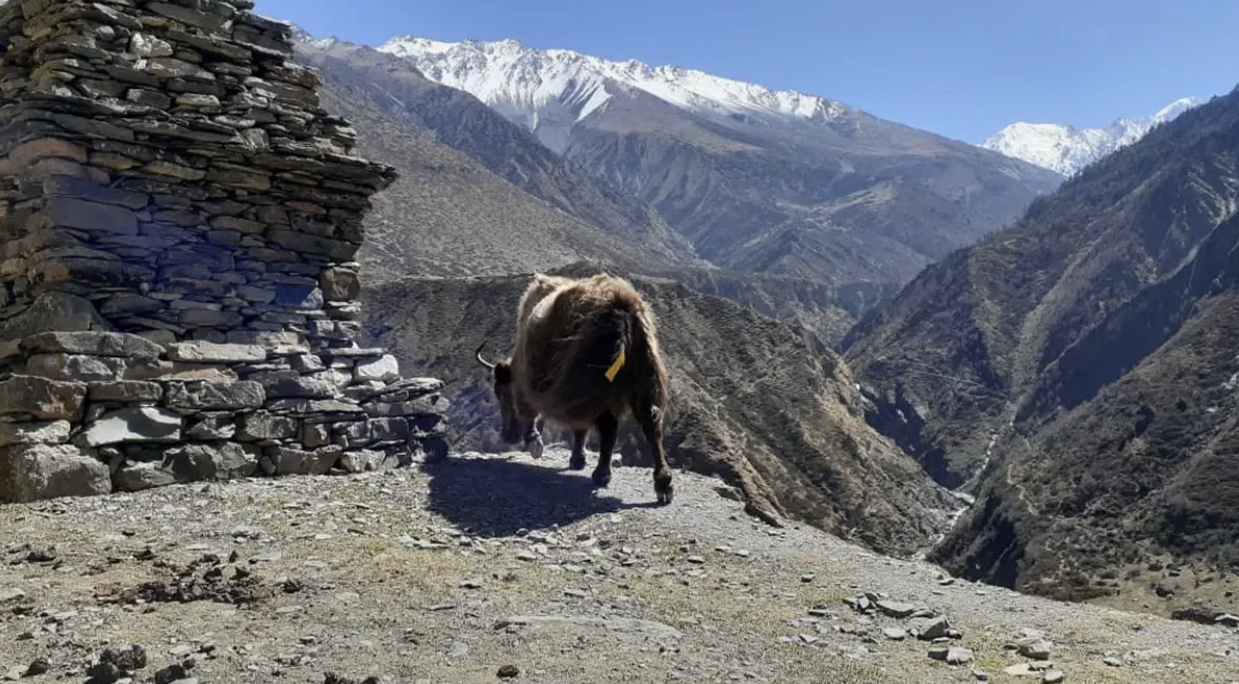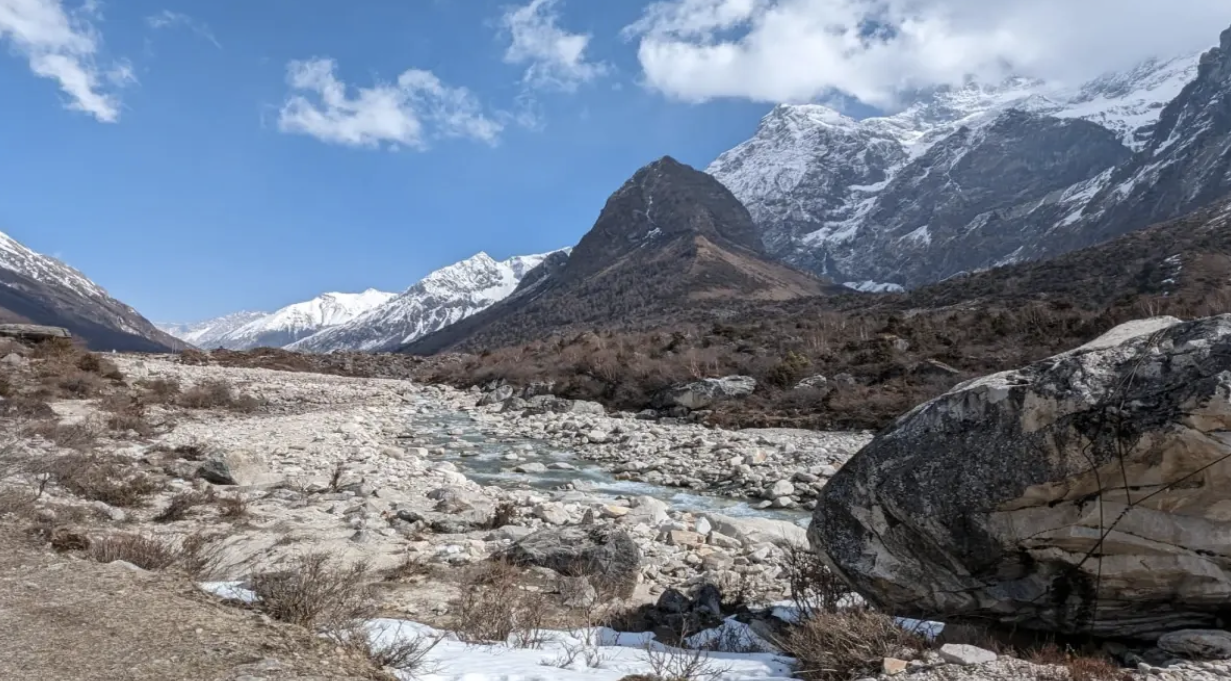Visitor Favourite: Manaslu Trekking and Tsum Valley Trekking Combined
Trekking in Nepal is an encounter that calls to experience significant others from all over the globe, advertising grand mountains, special societies, and flawless scenes. Among the numerous trekking courses in Nepal, the Manaslu Trekking and Tsum Valley Trekking stand out for their shocking common magnificence, rich social legacy, and the chance to investigate inaccessible, less-visited parts of the Himalayas. Combining the two treks in one travel offers extreme trekking involvement, taking you through rich woodlands, old cloisters, and rough landscapes, all set against the scenery of the compelling Manaslu and Ganesh Himal peaks.
Manaslu Trekking
Manaslu trekking is a journey that leads to the base of Mount Manaslu, the eighth-highest mountain in the world at 8,163 meters. Regularly called the "Japanese trek," due to its notoriety among Japanese climbers, it has picked up critical consideration from worldwide trekkers in later years. The trek takes you through the Manaslu Preservation Range, advertising a mind-blowing mix of common magnificence and social submersion. You will encounter a blend of terraced areas, snow-capped glades, and thick timberlands, with the Himalayas ever-present in the distance.
Unlike a few of the more prevalent trekking courses in Nepal, such as the Annapurna Circuit or the Everest Base Camp trek, the Manaslu trek offers a more disconnected and quiet encounter. The course is less swarmed, which implies you can appreciate the Himalayas in peace, without the hustle and haste of sightseers that regularly rule the more built-up trekking routes.
The trek ordinarily begins in Arughat and takes after the Budhi Gandaki Waterway upstream, passing through a few farther towns where the local people follow a way of life generally unaltered for centuries. This region is transcendently possessed by the Tibetan-Buddhist communities, and trekkers will have the opportunity to visit various religious communities, supplication wheels, and chortens (Buddhist stupas) along the way.
Small Group Best Group Up to 8 People
A little bunch trek, particularly one with no more than 8 People, is frequently respected as the best way to encounter the Manaslu trek. Trekking in smaller bunches offers a more personalized involvement, permitting the gatherer to move at a comfortable pace and appreciate a more intimate association with the surroundings.
The advantage of a little gathering is that it upgrades the trek’s satisfaction and minimizes the calculated challenges. With fewer trekkers, the course is less congested, and your direct can offer more custom-made bits of knowledge into the scenes, culture, and history of the region. Also, little bunches are less demanding to oversee in terms of housing and transportation, and you are likely to get more consideration from your watchmen and guides, making the trek smoother and more enjoyable.
Furthermore, in such little bunches, the camaraderie and group soul are cultivated, permitting trekkers to construct enduring companionships as they share the trek’s highs and lows. In inaccessible regions like Manaslu, where the travel can be extreme, having a close-knit gathering makes the encounter more improving and rewarding.
Manaslu Circuit Trekking - 13 Days
For those looking for a moderately brief but profoundly immersive Himalayan involvement, the Manaslu Circuit trek in 13 days is a fabulous choice. This trek takes you around the whole Manaslu massif, advertising a few of the most breathtaking views of snow-capped peaks, ice sheets, and high-altitude lakes.
Manaslu Circuit Trekking - 13 Days is outlined to take trekkers through an assortment of scenes, from subtropical woodlands to snow-capped glades and, at last, to the high-altitude wilderness that characterizes the Manaslu region. The circuit permits trekkers to encounter the different biological systems of the zone, extending from lavish terraced areas and rhododendron woodlands to high-altitude deserts and ice sheets. The most noteworthy point of the trek is Larkya La Pass, at 5,160 meters, which presents a challenging, however fulfilling, ascent.
This trek is not as if it were physically requesting but moreover socially enhancing. As you pass through inaccessible towns such as Soti Khola, Philim, Bihi, and Samagaon, you get a firsthand look at the ways of life of the innate Sherpa and Tibetan communities that call this region home. The trek is an extraordinary opportunity to associate with these communities and learn about their one-of-a-kind culture, conventions, and Buddhist practices.
The 13-day Manaslu Circuit trek gives a phenomenal adjustment between physical challenge and social submersion, all while displaying the magnificence of the Himalayas.
Manaslu Circuit Tsum Valley Trekking - 20 Days
For trekkers who are looking for a longer, more comprehensive Himalayan travel experience, Manaslu Circuit Tsum Valley Trekking - 20 Days is the extreme choice. Taking around 20 days in total, this trek, not as it were, incorporates the classic Manaslu Circuit but also branches off to the farther Tsum Valley, a sacrosanct range generally untouched by advanced life.
The Tsum Valley is regularly alluded to as the "Covered-up Valley" due to its confinement. Tucked away in the northern portion of the Manaslu region, it is home to a one-of-a-kind Tibetan Buddhist culture, with old cloisters, supplication wheels, and stupas speaking the scene. The valley is also known for its shocking normal magnificence, counting the towering peaks of Ganesh Himal, Shringi Himal, and Manaslu.
The trek starts, so also to the Manaslu Circuit, passing through lavish woodlands and conventional towns, sometime recently taking a reroute into the Tsum Valley. In the valley, trekkers will visit a few noteworthy devout regions, counting the Rachen Religious community and Gumba Lungdang, which are key trek goals for Tibetan Buddhists.
While the Manaslu Circuit is, as of now, known for its breathtaking view, the expansion of the Tsum Valley to the trek includes an additional layer of investigation and social revelation. The 20-day trek permits trekkers to completely submerge themselves in the characteristic excellence and wealthy culture of this little-known region of Nepal.
Natural Beauty
The normal excellence of the Manaslu Circuit trek and the Tsum Valley trek is unparalleled. All through both treks, you will be treated to vistas of a few of the most noteworthy peaks in the world, including Manaslu (8,163 meters), Ganesh Himal (7,422 meters), and Sringi Himal (7,187 meters). These mountains, secured in snow and ice sheets, serve as a steady background, making the whole trekking involvement awe-inspiring.
The treks too pass through different environments, each with its particular vegetation and fauna. In the lower regions, you will climb through terraced areas, woodlands of oak, rhododendron, and pine, and cross crystal-clear streams. As you climb, the scene moves into elevated knolls and rough ways driving to high-altitude deserts. The Manaslu region is too domestic to a variety of natural life, counting the Himalayan tahr, blue sheep, snow panther, and red panda, including a sense of wildness to the trek.
Routes
The courses of the Manaslu Circuit trek and the Tsum Valley trek are carefully outlined to exhibit the best of the Himalayas, from rich timberlands to tall mountain passes. Beginning from Arughat or Soti Khola, trekkers take after the Budhi Gandaki Stream upstream through beautiful towns like Sama Gaon and Samdo, sometimes recently climbing to Larkya La Pass. The course offers a few days for acclimatization, guaranteeing that trekkers can handle the height and appreciate the trek safely.
The course through the Tsum Valley is an included highlight. It is moderately inaccessible, with a restricted framework and fewer trekkers. The valley is speckled with Tibetan Buddhist religious communities, stupas, and sacrosanct regions that give trekkers the chance to investigate antiquated societies and religions while being encompassed by awe-inspiring mountain scenery.
Best Time
The best time to trek the Manaslu Circuit and Tsum Valley is amid the two fundamental trekking seasons in Nepal: spring (March to May) and harvest time (September to November). Amid these months, the climate is by and large steady, and the skies are clear, advertising culminating conditions for trekking. The spring months bring excellent wildflowers, whereas harvest time is known for its fresh dusk and clear visibility.
It is fitting to dodge trekking amid the winter months (December to February), as the trails can be secured in snow, and the temperatures can drop altogether, particularly at higher elevations. So also, the storm season (June to August) ought to be dodged due to overwhelming precipitation, which can make the trails elusive and dangerous.
Preparation Complete
Preparing for the Manaslu Trekking and Tsum Valley Trekking requires physical conditioning, mental planning, and satisfactory equipment. These treks are direct and strenuous in trouble, with high-altitude passes and the potential for challenging climate conditions. It is prescribed to prepare for a few months sometime, recently setting out on the trek, centering on cardiovascular wellness, leg quality, and endurance.
In terms of adapting, a high-quality resting sack, warm dress, durable trekking boots, and layers for changing temperatures are basic. Moreover, trekking licenses, counting the Manaslu Preservation Region permit (MCAP) and the Tsum Valley permit, must be obtained in advance.
Conclusion
The Manaslu Circuit trek combined with the Tsum Valley trek offers one of the most fabulous and socially wealthy trekking encounters in Nepal. By joining these two treks together, you get to encounter the best of the Himalayas, from breathtaking mountain peaks and faraway valleys to social investigation and otherworldly experiences with Tibetan Buddhism. Whether you select the shorter 13-day Manaslu Circuit trek or the longer 20-day Manaslu Circuit and Tsum Valley trek, the enterprise will be an exceptional trek.
FAQs
What is the best time to do the Manaslu Circuit and Tsum Valley trek?
The best time is amid harvest time (September to November) and spring (March to May) when the climate is clear and stable.
Do I require past trekking involvement for the Manaslu and Tsum Valley trek?
Yes, the trek is direct and strenuous, so past trekking encounters and physical wellness are essential.
How long does the Manaslu Circuit and Tsum Valley trek take?
The Manaslu Circuit trek takes around 13 days, whereas the Manaslu Circuit and Tsum Valley trek takes around 20 days.
What licenses do I require for the trek?
You will require the Manaslu Preservation Zone permit (MCAP), Tsum Valley permit, and Annapurna Preservation Region permit (ACAP).
Is it secure to trek in the Manaslu and Tsum Valley region?
Yes, with appropriate planning, acclimatization, and an authorized direct, the trek is considered secure. Be that as it may, elevation affliction is a concern at higher heights, so legitimate acclimatization is key.
What is the most noteworthy point of the trek?
The most noteworthy point of the Manaslu Circuit trek is the Larkya La Pass at 5,160 meters (16,929 feet).
Booking Process by Ammonite Adventure:
To book any of these trek tours through Ammonite Adventure and Treks Pvt. Ltd. begin by contacting them via email at info@ammoniteadventure.com or phone or WhatsApp at +977 985-1230809
to discuss your preferred dates, group size, and specific needs. Prior to the trek, you will receive a comprehensive pre-trek briefing with essential information on packing, fitness preparation, and altitude acclimatization.
The agency will finalize all logistical arrangements, including transportation, accommodation, and permits, to ensure everything is in place for your journey. Upon arrival in Nepal, the team will ensure that all aspects of the trek are organized, providing you with a smooth and unforgettable experience on these treks.








